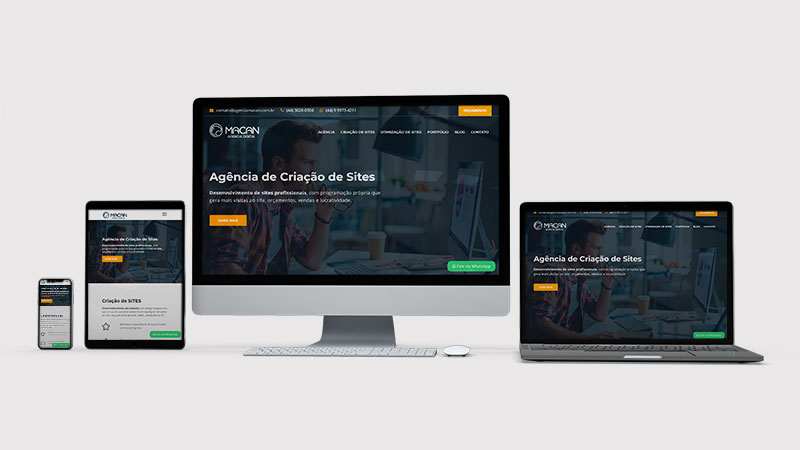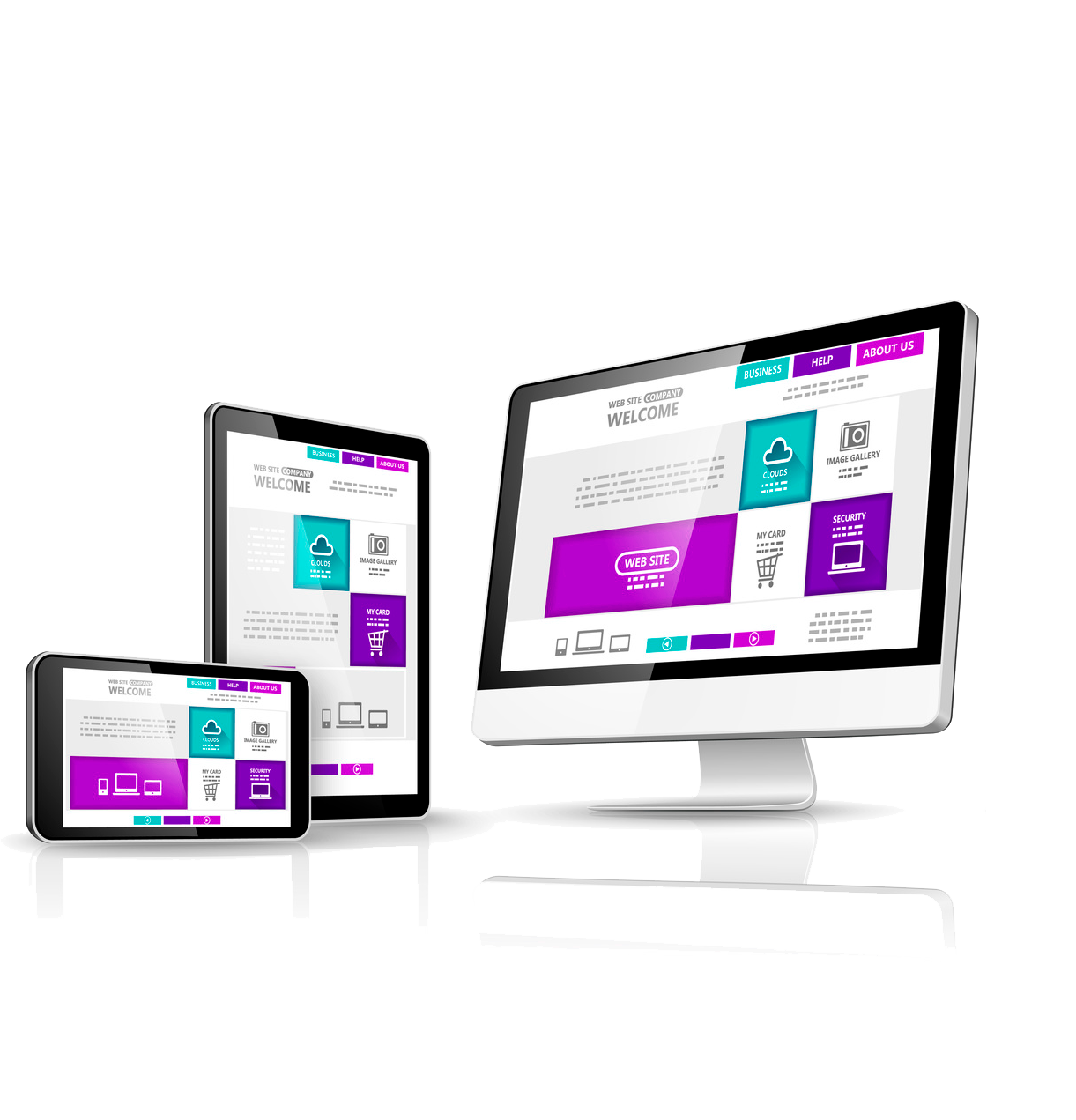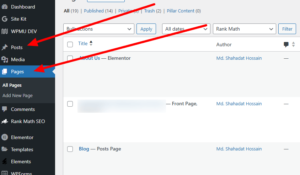A Site Institucional is a corporate website representing a business or organization. It provides essential information about the company’s services, mission, and values.
A well-designed Site Institucional is crucial for establishing a strong online presence. It offers visitors a comprehensive view of the company, including its history, team, and contact information. The site should be user-friendly, visually appealing, and optimized for search engines.
High-quality content and clear navigation enhance user experience, encouraging engagement and building trust. Companies can showcase their expertise, share news, and provide valuable resources through their institutional site. This digital platform serves as a vital communication tool, connecting businesses with their audience and fostering lasting relationships. Investing in a professional Site Institucional can significantly impact a company’s reputation and growth.
Why A Professional Website Matters
A professional website is essential for every business. It serves as your digital storefront. A well-designed site can attract customers and build trust. Let’s explore why a professional website matters.
First Impressions Count
First impressions are crucial. Your website is often the first interaction customers have with your business. A clean, modern design can capture interest immediately. Visitors judge your business based on your site’s appearance. If your website looks outdated, they might think your business is too.
Consider this:
- Loading Speed: Fast-loading pages keep visitors engaged.
- Responsive Design: Your site should work on all devices.
- Visual Appeal: Use high-quality images and readable fonts.
A professional look can make visitors stay longer. It increases the chance they will become customers.
Building Credibility
A professional website builds credibility. It shows you are serious about your business. Customers trust businesses with well-maintained sites. An updated site reflects a business that cares about its image.
Essential elements include:
- Clear Contact Information: Make it easy for customers to reach you.
- Customer Testimonials: Positive reviews build trust.
- Secure Connections: Use HTTPS to protect customer data.
These elements make your business seem more reliable. Trustworthy websites convert more visitors into customers.
In summary, a professional website is key to making a good first impression and building credibility. Invest in your site to see your business grow.

Credit: www.behance.net
Key Elements Of A Successful Website
A successful website is more than just a pretty face. It needs to engage visitors, provide value, and achieve business goals. Below, we outline the key elements that make a website successful.
User-friendly Design
A user-friendly design ensures visitors can easily navigate the site. This increases engagement and reduces bounce rates.
- Clear Navigation: Menus should be simple and intuitive.
- Responsive Layout: The site must look good on all devices.
- Fast Loading: Pages should load quickly to retain visitors.
Seo Optimization
SEO optimization helps your site rank higher on search engines. This increases organic traffic and visibility.
| Element | Description |
|---|---|
| Keywords | Use relevant keywords in content and meta tags. |
| Backlinks | Get quality backlinks from reputable sites. |
| Content Quality | Provide valuable, original content that answers user queries. |
By focusing on these key elements, you can create a successful and engaging website.
Content Is King
The phrase “Content is King” emphasizes the importance of high-quality content on a website. For a Site Institucional, the right content can engage visitors, improve SEO, and establish credibility.
Engaging Copy
Engaging copy is key to holding a visitor’s attention. Use short sentences and clear language to make your message clear.
- Headlines should be catchy and relevant.
- Use bullet points to break up text.
- Incorporate keywords naturally for SEO.
Engaging copy helps users understand your message quickly. It also encourages them to explore more of your site.
High-quality Images
Images can enhance the visual appeal of your Site Institucional. High-quality images create a professional look and feel.
| Image Type | Benefit |
|---|---|
| Stock Photos | Easy to find and use |
| Original Photos | Unique and authentic |
| Infographics | Convey information quickly |
Always use images that are relevant to your content. They should be optimized for web to ensure fast loading times.

Credit: www.lameirasoft.ao
Mobile Responsiveness
Mobile responsiveness means your website works well on all devices. It ensures users have a good experience on smartphones and tablets. This is crucial for site institucional websites. Let’s explore why this matters and how to achieve it.
Importance Of Mobile
Most users access the internet through mobile devices. A site that isn’t mobile-friendly can lose visitors quickly. Google ranks mobile-friendly sites higher in search results. This can boost your visibility and traffic.
Mobile users expect fast loading times. Slow sites can frustrate visitors. A responsive site ensures quick load times. This keeps visitors engaged and reduces bounce rates.
Optimizing For Different Devices
Different devices have various screen sizes and resolutions. Your site should adapt to all these differences. Responsive design uses flexible layouts to adjust to any screen size. This ensures a consistent experience across devices.
Use media queries in CSS to apply styles based on device characteristics. This can include screen width, height, and orientation. Here’s an example:
@media only screen and (max-width: 600px) {
body {
font-size: 14px;
}
}
Ensure images and videos scale properly. Use responsive images with the `srcset` attribute. This allows the browser to choose the best image for the device. Here is a sample:
Create touch-friendly navigation. Ensure buttons and links are easy to tap. Use a mobile-first approach in your design process. Start with the smallest screen size and work up.
| Device | Recommended Font Size |
|---|---|
| Smartphone | 14-16px |
| Tablet | 16-18px |
| Desktop | 18-20px |
Test your site on various devices. Use tools like Google Mobile-Friendly Test. This ensures your site meets mobile standards.
Social Media Integration
Social media integration is vital for modern websites. It enhances user engagement and boosts your online presence. By connecting platforms, you can drive more traffic to your site. This leads to increased visibility and potential customer interaction.
Connecting Platforms
Connecting your social media platforms to your site is essential. It allows visitors to follow and share your content easily. Use buttons and widgets to link your social accounts.
Embedding social feeds can also keep your site dynamic. This provides fresh content without much effort. Users love seeing real-time updates and posts.
Driving Traffic
Social media integration is crucial for driving traffic. Sharing content on social platforms directs users back to your site. This increases the chances of conversions.
Use engaging posts to attract attention. Include links to specific pages on your site.
- Share blog posts
- Promote products or services
- Announce events or updates
Track your traffic sources to see which platforms work best. Adjust your strategy based on these insights.
| Platform | Best Practices |
|---|---|
| Post regularly, use images and videos | |
| Use hashtags, engage with followers | |
| Share stories, use high-quality images | |
| Share professional content, network actively |
Analytics And Monitoring
Understanding how users interact with your Site Institucional is crucial. Analytics and monitoring tools help you track this interaction. They provide insights that allow you to make data-driven decisions.
Tracking User Behavior
Tracking user behavior offers valuable insights. You can see which pages attract the most visitors. You can also track how long users stay on a page. This data helps you understand user interests.
Using heatmaps, you can see where users click the most. Heatmaps highlight the popular areas of your site. This information helps you optimize your design.
- Page views
- Session duration
- Bounce rate
Making Data-driven Decisions
Data-driven decisions improve your Site Institucional. Analytics provide the data you need. You can see what works and what doesn’t. This helps you make informed changes.
For example, if a page has a high bounce rate, it needs improvement. You can test different elements to see what works best. This might include changing the layout or updating the content.
| Metric | Action |
|---|---|
| High Bounce Rate | Update Content |
| Low Session Duration | Improve Engagement |
| High Page Views | Analyze Content |
Use A/B testing to compare different versions of a page. This helps you choose the best performing version. Data-driven decisions make your site more effective.
- Identify key metrics
- Analyze the data
- Test different strategies
- Implement changes
- Monitor the results
By following these steps, you can enhance user experience. Analytics and monitoring help you stay ahead.
Security Measures
Ensuring the security of a Site Institucional is crucial. Implementing strong security measures protects user data and builds trust. This section explores the key security strategies for your site.
Protecting User Data
Protecting user data is a top priority. A secure site prevents unauthorized access. It safeguards sensitive information like passwords and personal details.
Encrypt user data using advanced algorithms. This makes it unreadable to hackers. Regularly update your encryption methods to stay ahead of threats.
Implement two-factor authentication (2FA). This adds an extra layer of security. Users must verify their identity with a second method, like a text message code.
Implementing Https
Implementing HTTPS is essential for site security. HTTPS encrypts data between the user’s browser and your server. This prevents eavesdropping and tampering.
To implement HTTPS, obtain an SSL certificate. Many providers offer these certificates. Once installed, your site will display a padlock icon in the browser.
Ensure all pages and resources use HTTPS. Mixed content (HTTP and HTTPS) can weaken security. Regularly check your site for any non-secure elements.
| Security Measure | Benefit |
|---|---|
| Encryption | Protects data from unauthorized access |
| Two-Factor Authentication | Adds an extra layer of security |
| HTTPS | Encrypts data between user and server |
- Encrypt sensitive data
- Use two-factor authentication
- Implement HTTPS for all pages
- Obtain an SSL certificate
- Install the certificate on your server
- Ensure all site resources use HTTPS

Credit: colorate.com.br
Ongoing Maintenance
Ongoing maintenance is crucial for the success of any Site Institucional. It ensures the site remains functional, secure, and up-to-date. Let’s explore the key aspects of ongoing maintenance.
Regular Updates
Regular updates keep your site fresh and relevant. They include updating content, plugins, and themes. Staying updated prevents security vulnerabilities and compatibility issues.
- Content Updates: Keep your information current and accurate.
- Plugin Updates: Ensure plugins are up-to-date to maintain functionality.
- Theme Updates: Update themes to avoid security risks and enhance design.
Handling Technical Issues
Technical issues can arise at any time. Being prepared to handle them quickly is vital. Regular monitoring helps identify problems before they escalate.
| Issue | Solution |
|---|---|
| Broken Links | Use tools to identify and fix broken links. |
| Slow Loading Times | Optimize images and use caching plugins. |
| Security Breaches | Install security plugins and conduct regular scans. |
Conclusion
A well-designed institutional site boosts your online presence and credibility. It helps attract and retain customers effectively. Prioritize user experience and clear information. Regular updates and SEO strategies ensure long-term success. Invest in a quality site to see your business thrive in the digital landscape.
Need help to create a brand new website? contact us






